Brick & Mortar & Concrete Block vs. Steel Buildings
DISCLAIMER: Due to the drastic fluctuation in construction prices use the following information as a general guide, understanding that supply chain issues, material costs, and consumer demand can significantly impact construction costs.
Steel buildings are a cost-efficient method for constructing warehouses, manufacturing structures, schools, office buildings, barns, restaurants, etc. Steel buildings can accommodate most aesthetic styles, with many options for exterior sidings, including brick, PBR wall panels, stucco, wood, and others. Steel buildings offer more strength and durability and lower maintenance than brick and mortar or concrete masonry units or blocks (CMU).
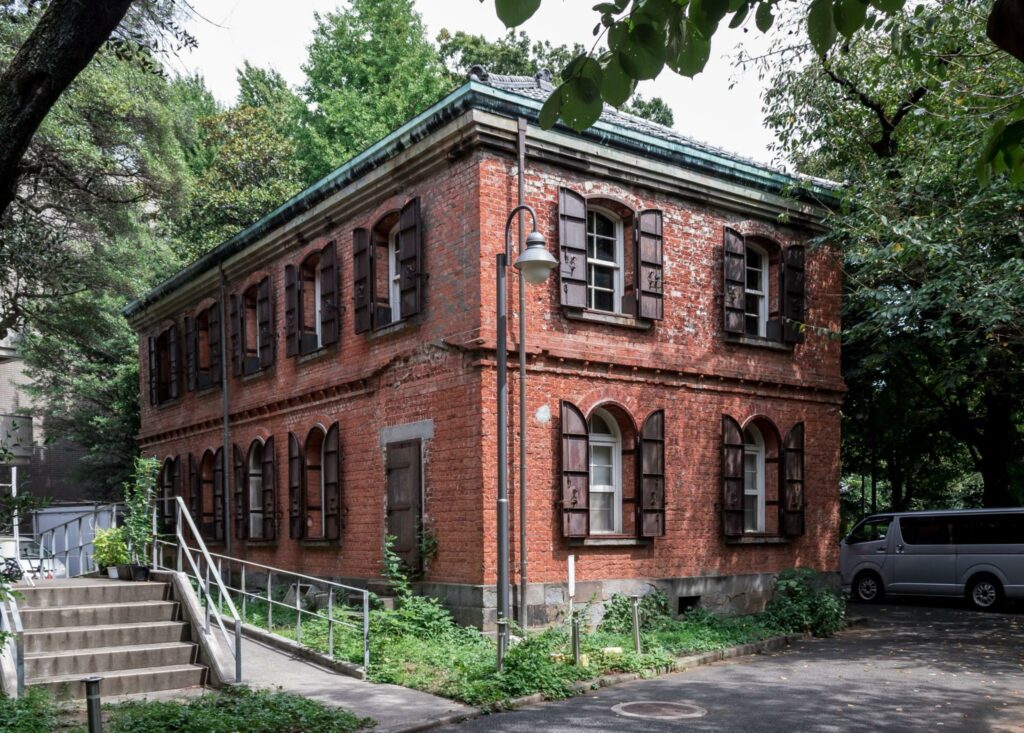
In this article, we take a look at brick and mortar and concrete block buildings and how steel buildings compare.

A Brief History of Masonry
For many years, bricks have provided the building blocks for homes, buildings, and even some of the world’s most important structures: the Roman Colosseum, Taj Mahal, and the pyramids of Giza.
In the beginning, brick manufacturing depended on the Sun’s heat. Workers would mix mud or clay with straw or dung, leaving the mixture to bake in the Sun. Eventually, they created shapes by cutting or using simple molds. However, in 3,500 B.C., manufacturers began firing bricks in kilns, making them available in colder climates, and introducing brickmaking throughout the ancient world.
Eventually, builders included cavity walls in the design of their structures to prevent water accumulation. Cavity walls consisted of at least two thick brick units, with an approximate 2-inch void space between them, to provide an exit point for any moisture making its way past the first brick layer. Cavity walls led to the idea of voids in bricks, which evolved into concrete masonry units (CMU) in construction.
One of the most significant advancements in brickmaking occurred in New York in 1852 when Richard VerValan invented the steam-powered brick-making machine. Before his invention, machine workers had to mold clay by hand. His invention streamlined the manufacturing process, and tremendously increased production, which led to an industry boom.
The extensive use of bricks in the late 20th and early 21st centuries contributed to the degradation of land and destruction of natural resources due to the removal of clay from the earth, and the use of fossil fuels to power the kilns releasing greenhouse gasses. In response, the brick industry moved towards more eco-friendly methods of brick production, including the use of natural gas and sawdust.
Today, manufacturers use cement, sand, and crushed stone or light aggregate to make bricks, and much higher heat (2,000° F), to improve their strength and quality and create a fire-, earthquake-, and sound-resistant exterior substrate.
In 2020, the brick-making industry produced approximately 1.9 trillion bricks, and is predicted to reach 2.3 trillion units by 2027.
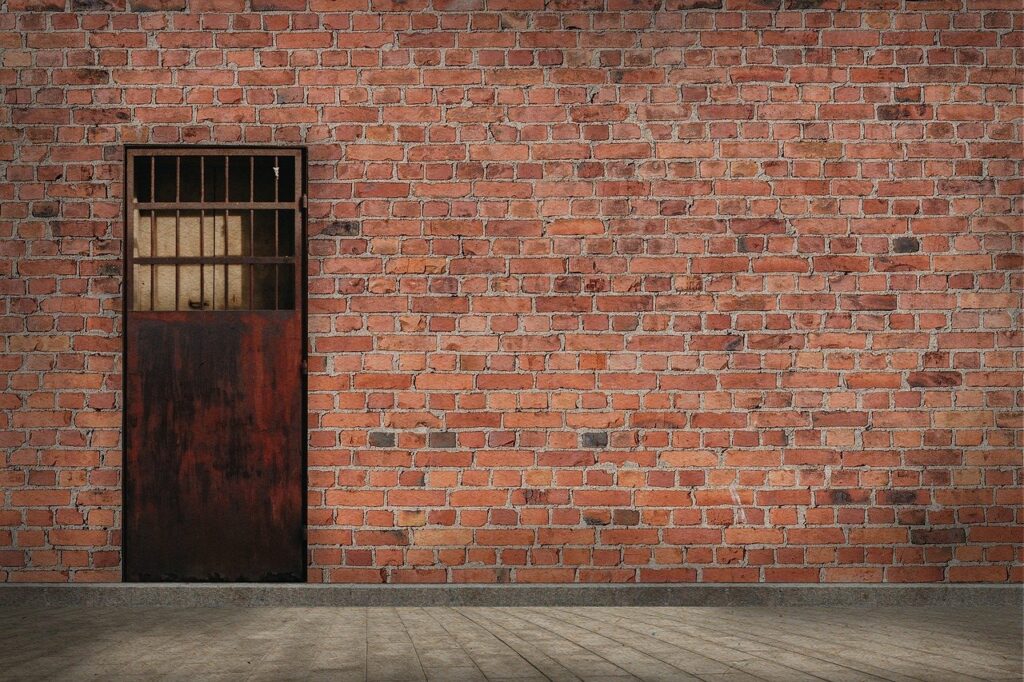
The Introduction of Steel
Prefabricated steel buildings are composed of custom-designed Primary and secondary steel members that bolt together on site.
Modern steel construction took off in the late 19th century when inventor Sidney Thomas mastered a way to remove phosphorus from steel, to increase its quality and allow for less costly production. In 1890, Chicago had the first all-steel framed skyscraper, the ten-story Rand McNally Building. The industry continues to make advancements in production and technology, yielding consistently more robust products.
Today, choosing high-quality steel products, like those from Allied Steel Buildings, saves money on construction, energy, maintenance, and repairs. Steel construction allows for endless and versatile exterior and interior design options, to ensure attractive and appealing buildings.
Concrete Blocks or Concrete Masonry Units (CMU)
The invention of the concrete block occurred in 1830. However, the U.S. did not widely use them until the mid-20th-century. The concrete block’s design, made from Portland cement, aggregates like quartz and stone, and water, has not changed in decades.
In addition, the solid or hollow blocks come in various shapes, with two or three voids or cores that make them lighter to handle. Builders can also fill the holes with grout/concrete to strengthen the wall.
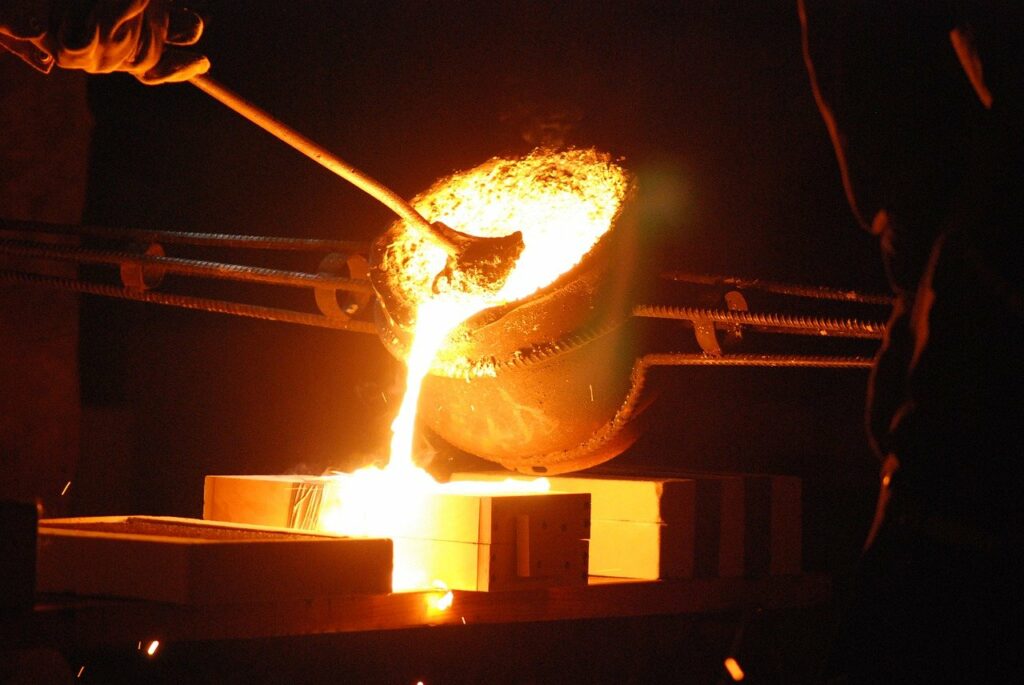
Structural Properties Comparison
Selecting the best materials for construction typically depends on their cost and effectiveness to resist loads and stresses acting on the structure, along with the size and use of the building.
Fortunately, the well-established and standardized building materials industry subjects structural-grade materials to quality control procedures. These procedures involve inspection and testing according to national standards and scientific testing methods. Chapter 17 of the 2021 IBC defines the quality, workmanship, building materials, and assemblies requirements.
The Density of Building Materials
The density of construction materials (kg/m3 or lb/ft3) affects the product’s compactness – the denser, the more compact. Density includes the material’s strength, heat, conductivity, etc. The greater a material’s density, the more strength it has to resist applied external forces. Density decreases heat transfer, and therefore lowers thermal conductivity.
- Steel: 490 lb/ft3, (7850 kg/m3)
- Brick: 100-112 lb/ft3, (1600-1800 kg/m3)
- Concrete Block: 85-140 lb/ft3 (1361- 2243 kg/m3)
Compressive Strength
Compressive strength in construction refers to a material’s ability to withstand compression and pressure (load-bearing capabilities). Earthquake-prone or extreme weather regions often require greater compressive strength.
- Steel: 50,000 psi (345 MPa)
- Brick: 1,000-2,000 psi (7-14 MPa)
- Concrete Block: 2,489 psi (175 MPa)
Tensile Strength
The tensile strength represents how much a material can stretch without breaking (the fracture point). For example, tensile tension can occur when the above forces push on an object (like a beam), causing the bottom of the beam to arch and stretch.
- Steel: 50,000 psi (350 MPa)
- Brick: 1,000-2,000 psi (0.35-2.1 MPa)
- Concrete Block: 300-700 psi (2-5 MPa)
Construction Process and Costs Comparison
A critical part of the construction process includes a cost comparison of the building products, like the exterior shell, that fit the project’s aesthetics, function, and budget requirements. Comparing the cost of an exterior shell should include material and construction costs, along with the concrete foundation. So, let’s look at the cost differences between concrete blocks, brick, and prefab steel buildings.
Concrete
Installing a concrete block wall, to precast concrete wall varies in price, but less than a poured concrete wall that requires more labor.
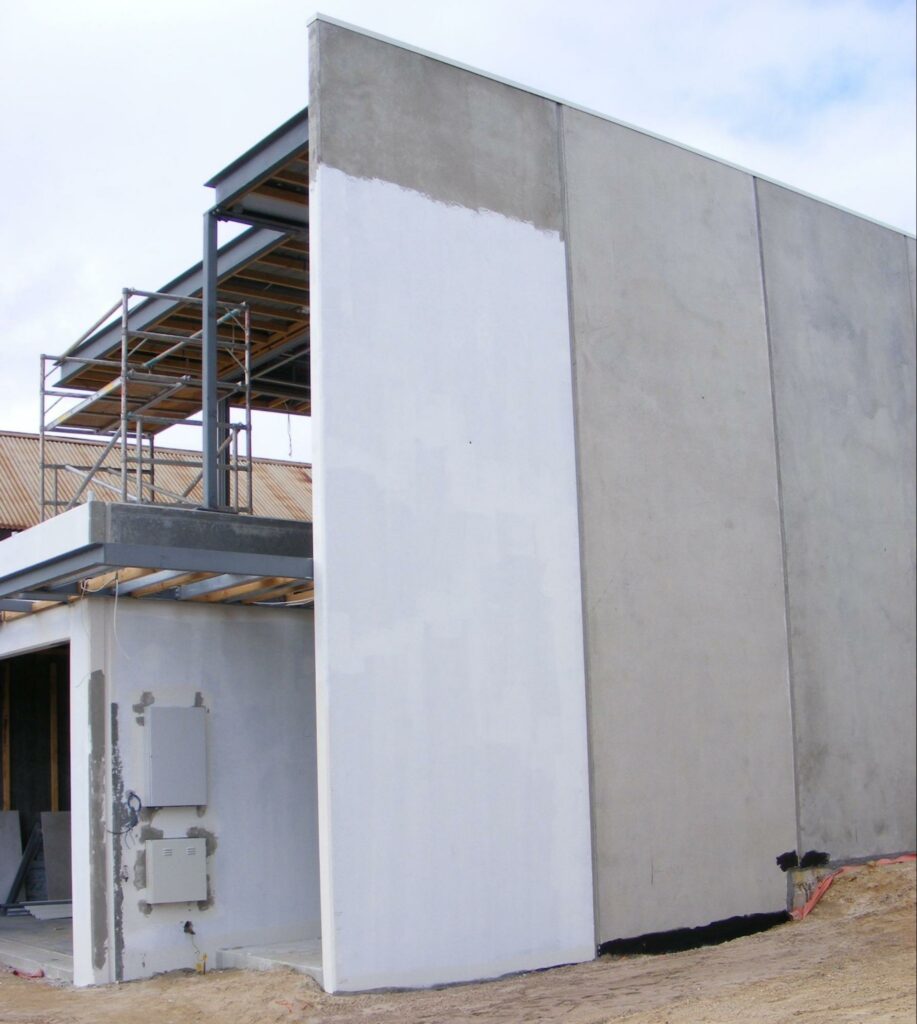
Brick and Mortar
Building a new brick wall varies in price, depending on the wall dimensions, style, and design type.

Prefab Steel
While prices vary dramatically in times of supply chain issues and war, steel buildings vary in price. Modern methods of manufacturing steel make it an extremely cost-effective building material. In addition, domestic structural steel contains 77 to 90 percent recycled steel, lessening the steel price. For steel buildings under 5,000 ft2, Allied Steel Buildings offer this real-time pricing calculator for clients.
For several reasons, prefabricated steel buildings cost less than concrete block and brick walls, yet steel provides more strength and durability and lower maintenance.
- Unlike brick and mortar or concrete block wall structures, a prefab steel building includes the roof.
- The strength of steel building systems lowers material and equipment costs compared to brick and concrete construction.
- The prefabrication of Allied Steel Buildings significantly cuts construction time, saving time and money on labor. The straightforward nature of framing and steel construction requires fewer skilled workers than brick or concrete methods, further cutting construction costs. Faster completion time also lowers interim financing and builders’ risk insurance costs.
Brick and Mortar vs Steel Building Costs
- Unlike conventional construction with brick and mortar, prefab steel buildings include architecture and engineering in the cost. Architecture and engineering for a brick and mortar or concrete block building will add about 15% to the project.
- Steel provides more durability than brick and mortar. The porous nature of bricks makes them susceptible to moisture damage and corrosion due to fluctuations in temperature and moisture, which can lead to structurally damaging and unhealthy mold.
Concrete Block vs Steel Building Costs
- Heavy concrete requires ongoing maintenance against mold and weather, unlike steel.
- Concrete’s increased weight requires thicker, more costly foundations to keep it steady, unlike lightweight steel structures.
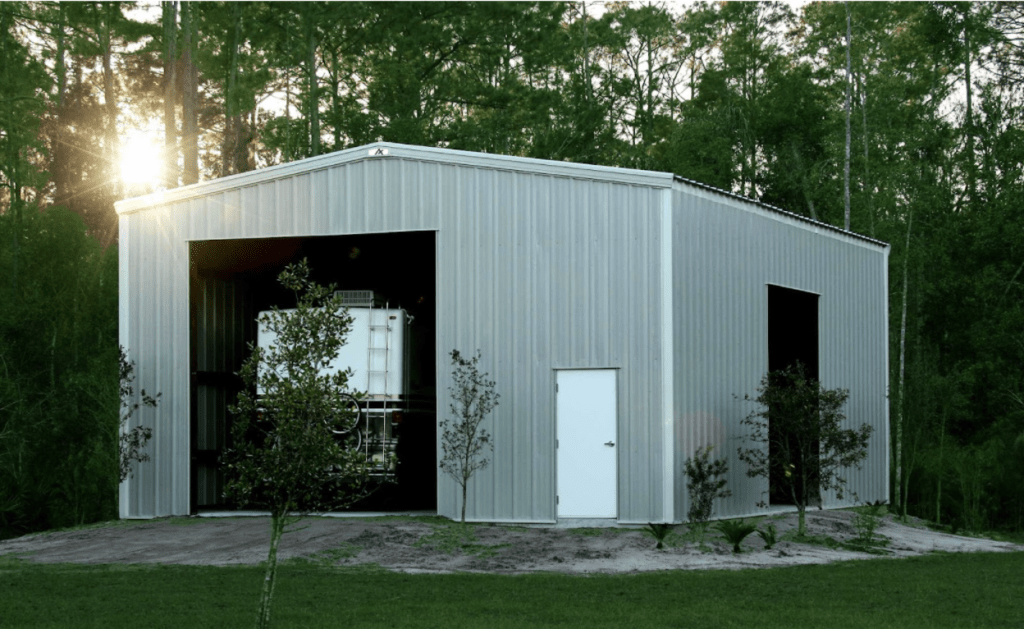
Dressing Up Prefab Steel with Modern Siding or Masonry
Deciding on what type of siding materials for your prefab steel building comes down to aesthetics, functionality, cost, and climate. Fortunately, you can choose from many siding options for prefab steel buildings, including brick.

Types of Siding Options for Prefab Steel Buildings
Attaching a brick (stone, rock) veneer to a metal building creates a classic, vintage look of red brick or another color matching your style. In addition, veneers have several benefits over real brick: less weight, moisture resistance, and design flexibility.
Steel Building PBR Wall Panels
Purlin bearing rib panels offer a durable, cost-efficient, air- and water-tight exterior wall, roof, fascias, and soffits system for pre-engineered steel buildings. The large selection of panels, available in many colors, overlap each other to create a strong metal-to-metal contact and ensure a weather-tight installation.
Economical, standard Allied Steel PBR panels feature small ribs between deep trapezoid-shaped ribs, to add strength without weight to the panels, visual appeal, and even-spaced shadows over the structure. The girt-bearing leg design creates consistent panel alignment and fastener engagement.
Other Allied Steel Building Panel Options
Insulated Metal Wall Panels
Allied Steel offers an insulated metal panel for steel structures that consists of two steel layers with a polyurethane or polyisocyanurate foam core. The lightweight, easy-to-install panels fulfill both the mechanical and aesthetic requirements, isolating heat, cold, fire, and sound, to save on energy bills.
Architectural Metal Wall Panels
Concealed Fastener (C.F.) Architectural Panel (for walls, fascias)
Allied Steel achieves C.F. panels’ clean, contemporary look with a concealed fastener, wall system. CF wall panels come in many colors and 24 or 22-gauge steel formed into 16-inch wide 3-inch deep sections.
Architectural Direct Fastened Panel (for walls only)
Architectural Direct Fastened Panels attach to an exposed fastening system, available in a smooth or embossed finish, in many colors. The panel comes in 22, 24, 26, and 29 gauge.
Stucco and Wood Siding
You can also apply stucco and wood studying to Allied Steel Buildings. Applied as panels or spray, stucco will soften the harsh feel of metal. Wood siding provides a more aesthetically natural look to the structures.
Design the Perfect Prefab Steel Buildings with Allied Steel Buildings
Allied Steel Buildings create strong, durable, and low-maintenance structures in many styles, colors, and siding options. Steel buildings provide a host of benefits, including material strength and an easier, less labor-intensive construction process. Considering they typically are less costly, especially in times of significant construction costs, steel buildings offer builders a great opportunity.
Contact Allied Steel Buildings today for more on steel’s cost and structural benefits over brick and mortar and concrete block construction.

